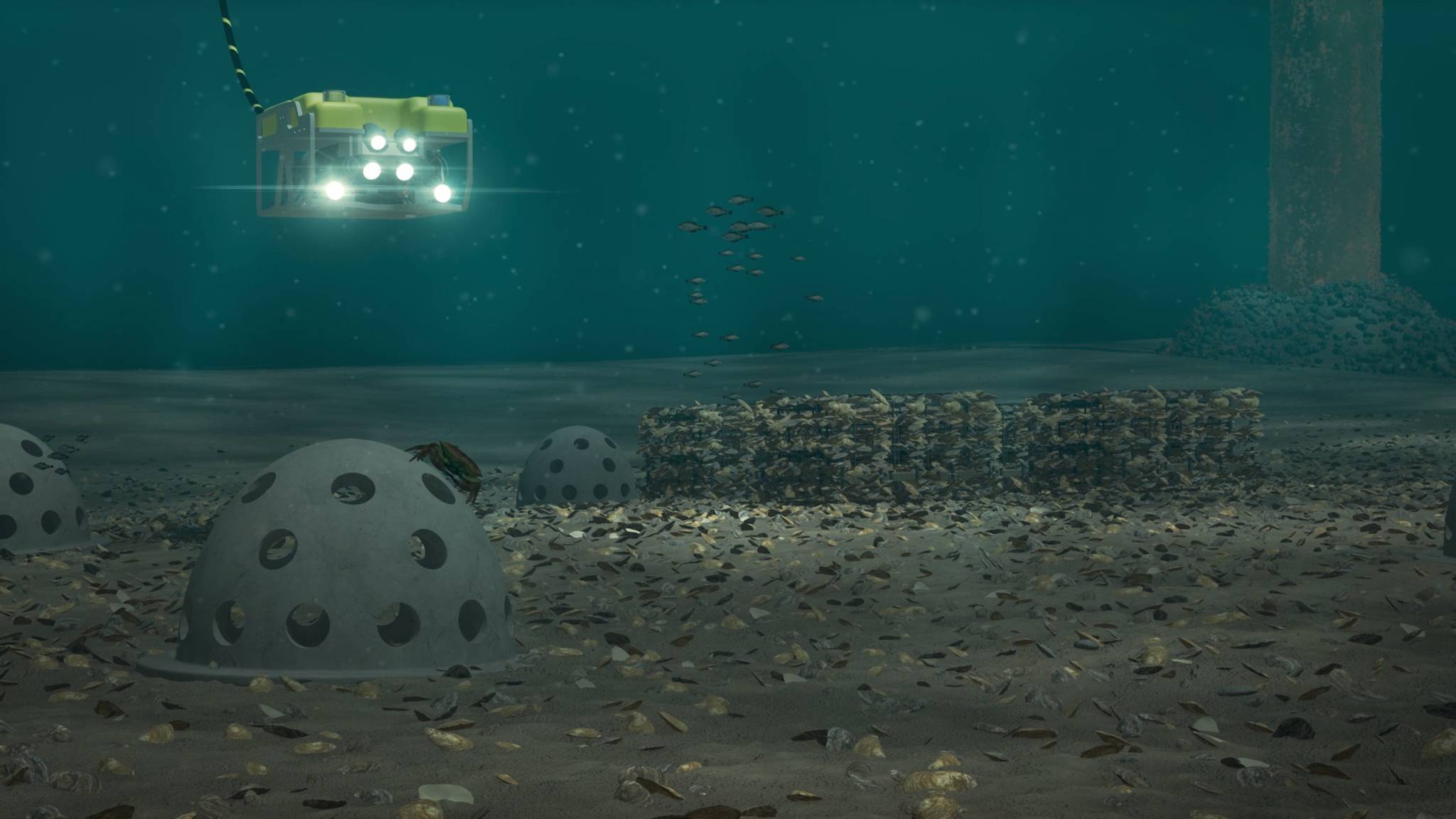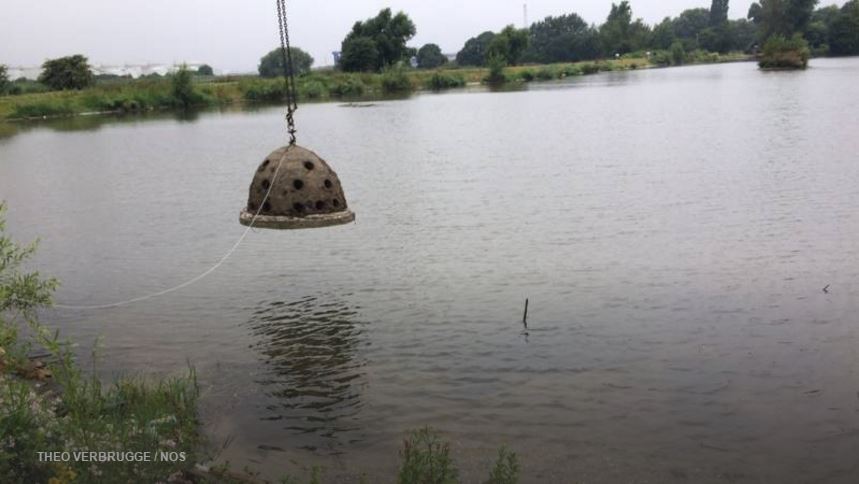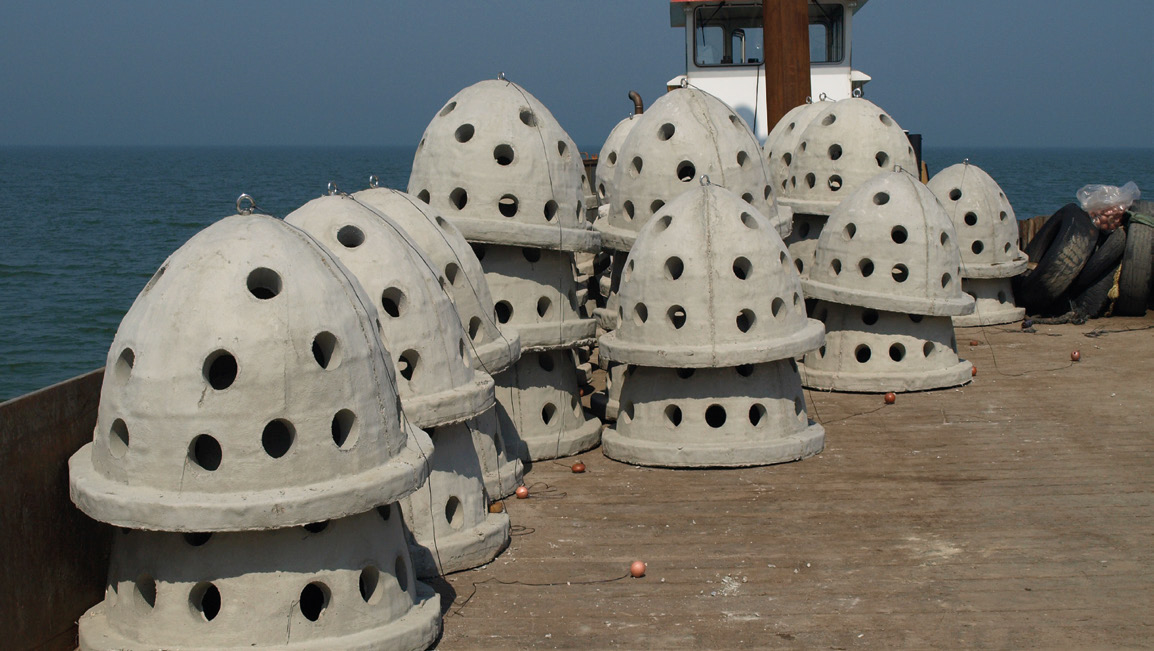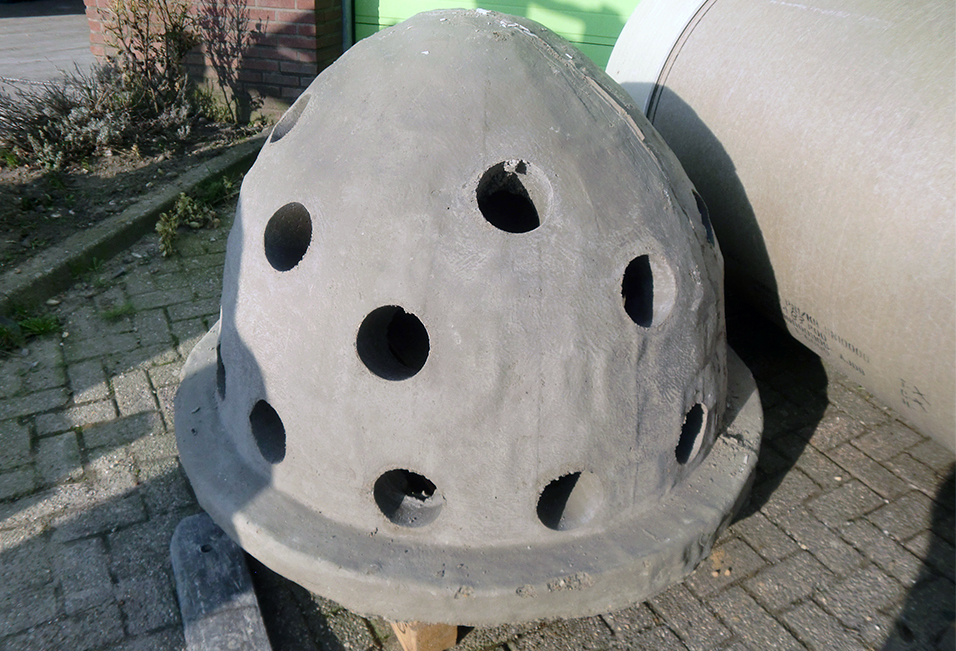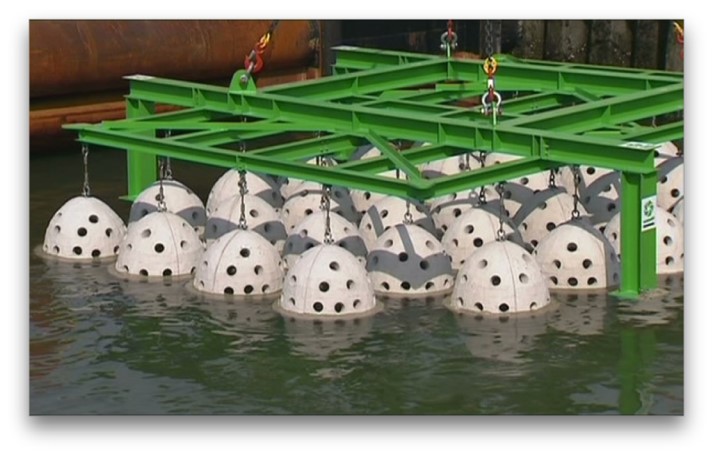In many Dutch waters, fish habitats are poor due to intensive human activity. Structures such as aquatic and riparian vegetation, dead wood, and stones are often missing, which reduces spawning, growth, shelter, and feeding areas for fish and other aquatic fauna. Intensive shipping, locks, weirs, and pumping stations still form major barriers to fish migration. In places where natural structures are absent, “reef balls” can improve fish habitats and migration opportunities.
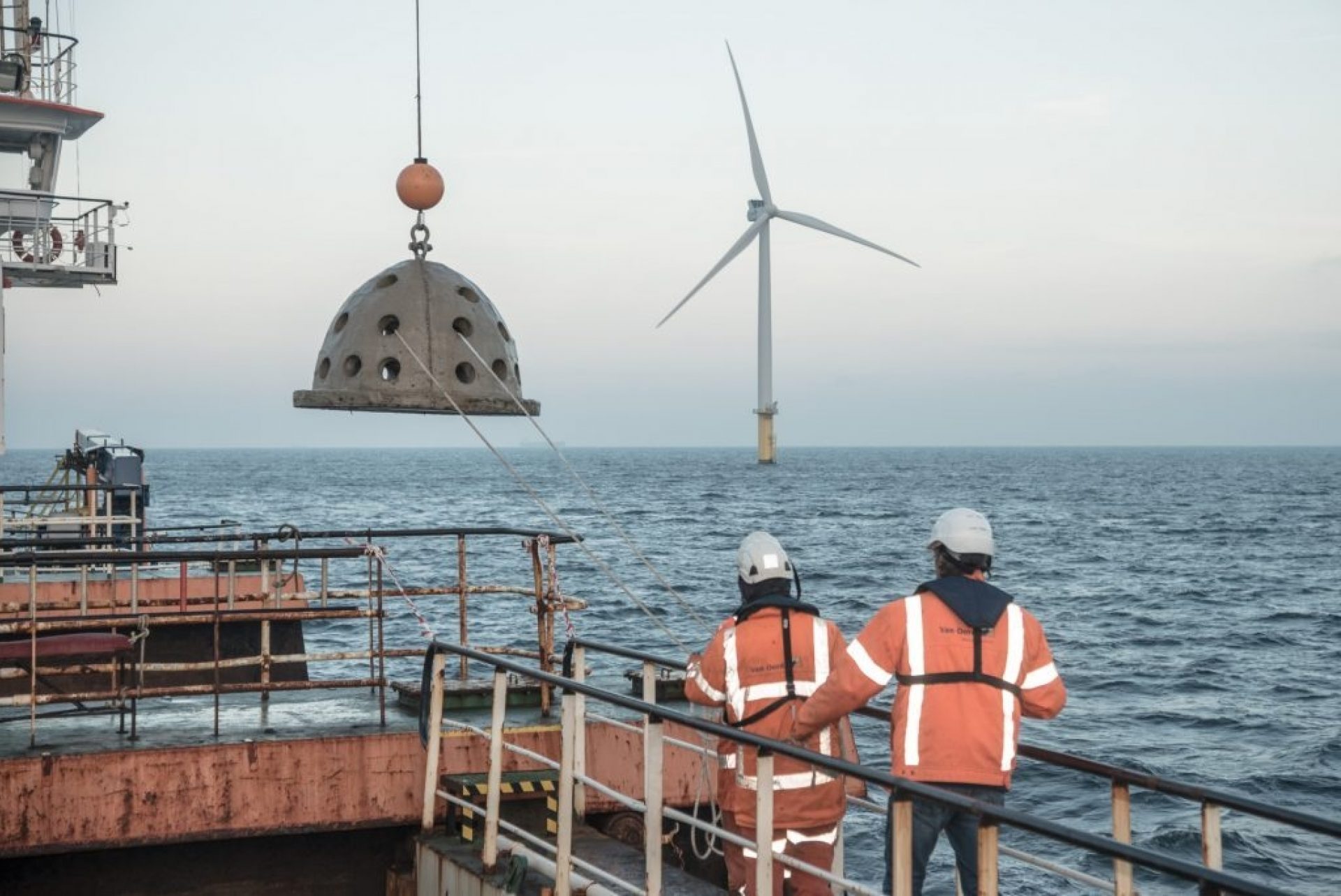
How it works
The concrete reef balls are shaped like beehives and are about one to one and a half meters high and wide. A reef ball without a bottom weighs around 800 kg each. With a concrete bottom, they weigh about 1000 kg per piece. The reef balls are equipped with holes that allow fish to swim in and out of the structure. The top is closed, and the hole diameters are specifically designed for certain bird sizes, providing a safe haven from predators such as cormorants. The robustness of the reef balls is adapted to withstand harsh weather conditions, such as those in the IJsselmeer area.
For more information, see the Dutch article “Korven voor Vis” from the magazine Visionair (Sportvisserij Nederland).
And there was a spin-off advertisement on Dutch television from ASN Bank about the “PVC horse” featuring the reef balls.
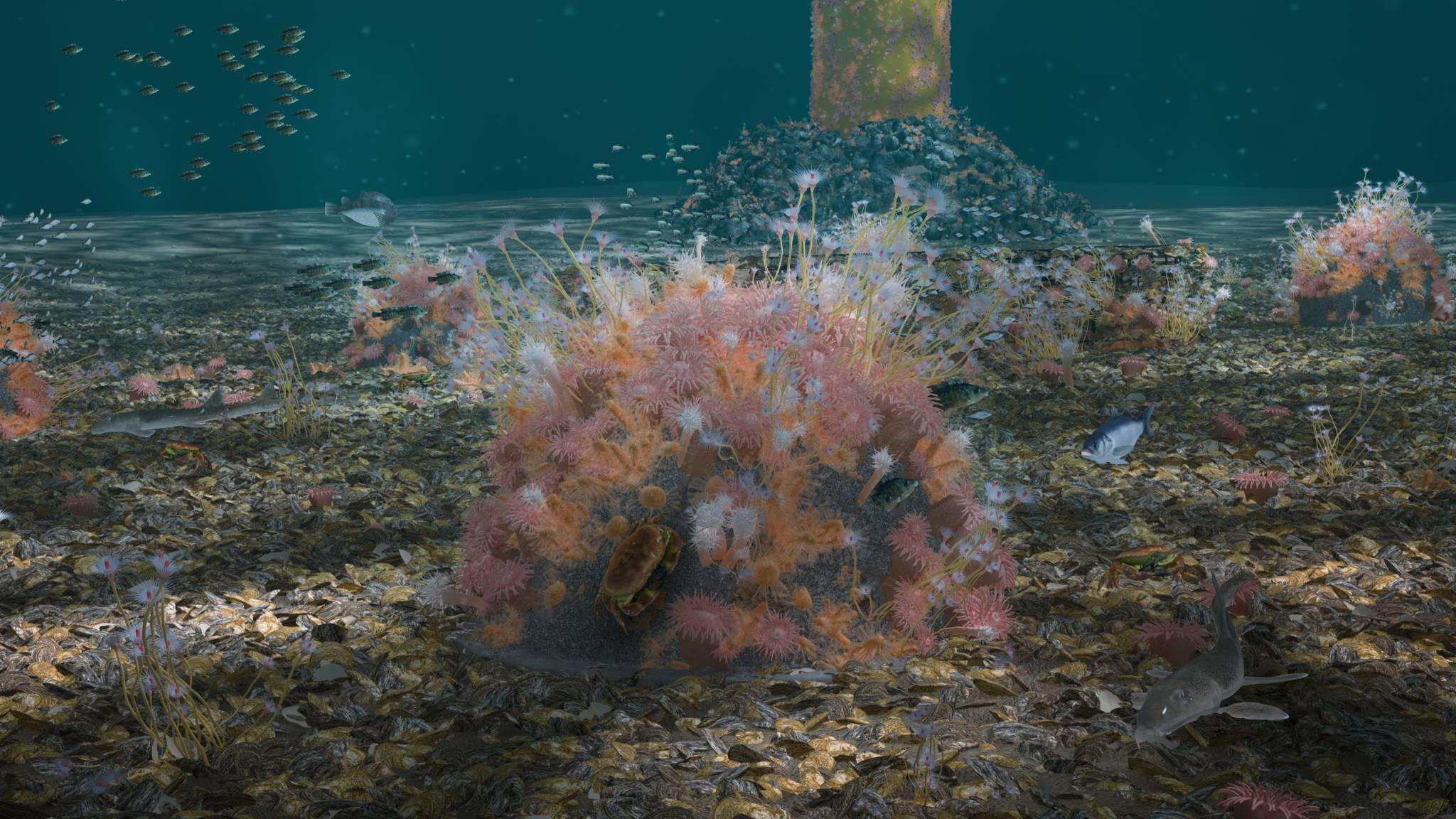
Reef Balls and Placement
These photos provide an impression of the reef balls and the various locations where we have implemented them.
Request a Quote
Do you need reef balls? Send an email to info@fishflow.nl or contact us via the info on our contact page. We will contact you promptly to discuss your request and provide a suitable solution.



